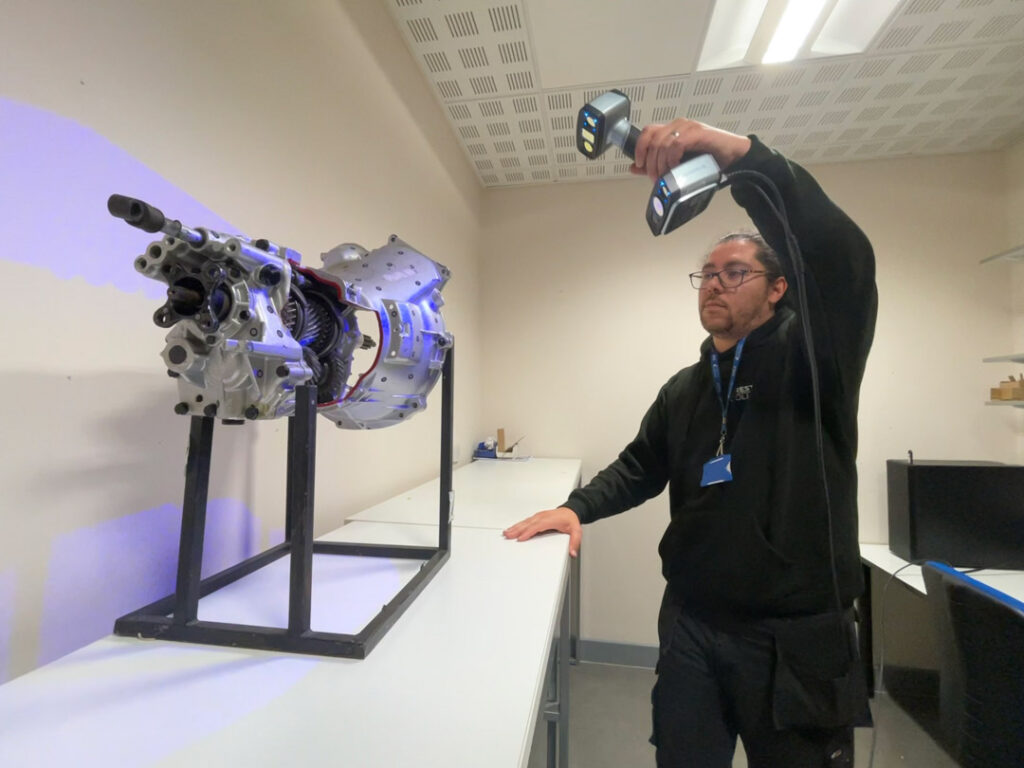
A 3D scanner that can produce digital plans accurate to less than 1/100 mm is bringing learning to life at the IoT’s Preston College site.
The scanner, in the college’s iSTEM building, has been bought using IoT funding and is already making a huge impact for students in the engineering and automotive departments.
The object to be scanned is fitted with tracking points that allow a handheld scanner to precisely measure its dimensions. The object, whether it’s an aircraft part or piece of a car engine, is reproduced on screen using industry-leading software that would then allow students to 3D print it for use in a practical exercise.
Jason Morrison, IT desk technician, said the equipment had provided hands-on experience for students.
“For the iSTEM, this piece of equipment was a no-brainer,” he said. “We can have 20 students all looking at a model on screen while the teaching staff interact with it, which creates a more interactive classroom.
“You could spend half an hour scanning something to make sure you get every single detail to sub-1/100mm accuracy, and then that can be 3D printed in the college.”
The technology has huge implications for industry, allowing parts to be created a lot more efficiently, and students are learning this method from day one.
“Previously if you wanted a part for an engine, for example, you’d need to source the specific plans to make it,” he said. “If that part had gone out of production, you may not be able to get hold of the instructions, which makes things difficult, and then you’d have to use the CNC machines to create it. With this method, you create an accurate image on screen and can then 3D print it.”
The equipment means protypes can be created cheaper and then used to test tolerances, for example. “BAE Systems have a similar set-up to this, which means students are learning on equipment they’ll use in a real-life environment from an early stage,” he added.